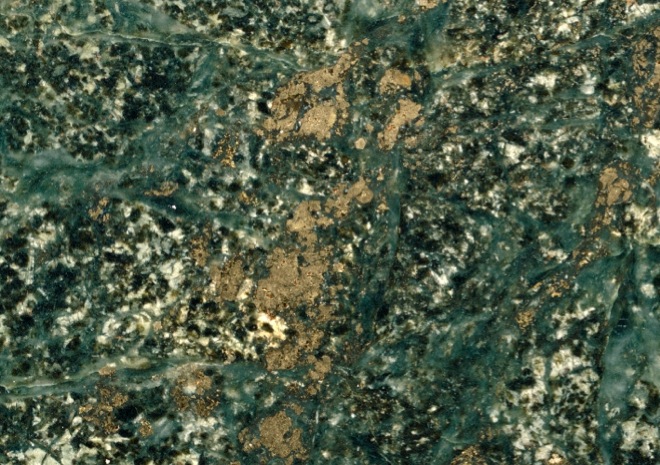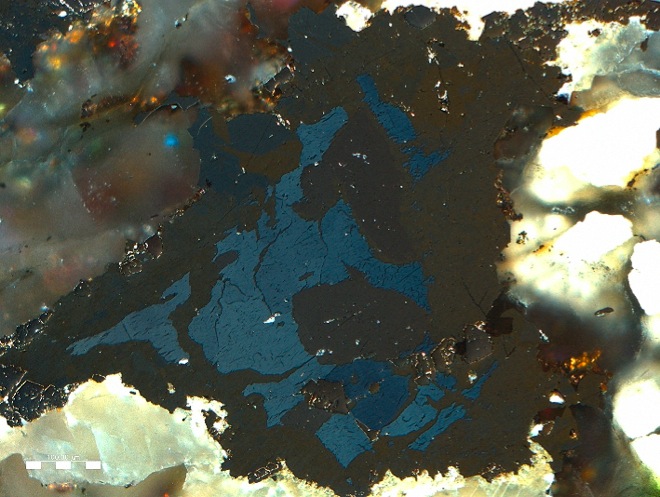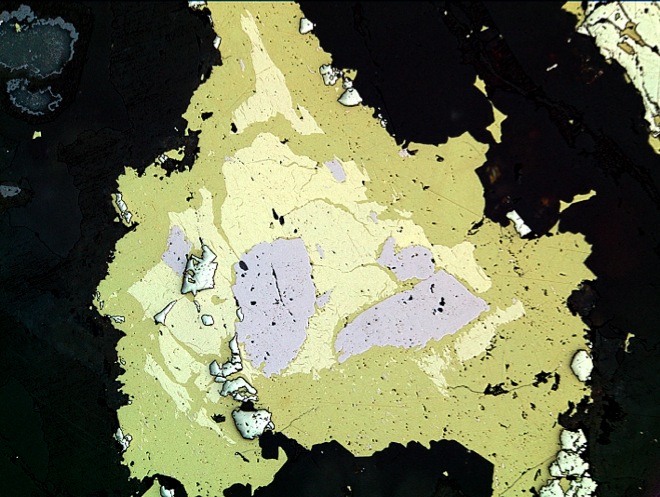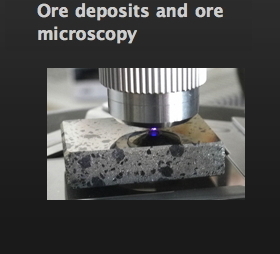The Gläser mine was a small exploration work with two tiny open pits and a 53 m long adit build in 1937-38. The mine reached three picritic metabasaltic bodies with four Ni-ore containing zones. This olivin-rich metadolerite belongs to the lower carbon and intruded into devonic shales and sandstones. In 1952 it was again concluded that the deposit is economic not viable. The main ore minerals are pyrite, chalcopyrite and millerite.
A polished slab of the average ore, about 10.5 cm wide. The ore mineral content is pretty low:

A 6400 dpi scan covering about 20 mm of the sample:

The polished sample with Nic //, Obj. 20x, air, 100 µm scale bar. Umn: ullmannite, Ccp: chalcopyrite, Mll: millerite, Pyr: pyrite:

The same with Nic + showing the strong anisotropy of the millerite:

The same with Nic +, 90° rotated:

Another part of the sample. Nic //, Obj. 20x, air, 100 µm scale bar. Ccp: chalcopyrite, Mll: millerite, Pyr: pyrite:

Some playing around with multispectral imaging: a series of fotos was made using a black/white camera with filters of 10 nm bandwidth (10 nm FWHM), then three fotos were combined to get a RGB composite. The first foto combines 410 nm, 480 nm and 640 nm:

This one is a combination of 440 nm, 520 nm and 680 nm:

For further informations on the region this book might be interesting:
P. Bender, H.-J. Lippert, H.-D. Nesbor (1997): Erläuterungen zur Geologischen Karte von Hessen 1:25.000 Blatt 5216 (Oberscheld)



